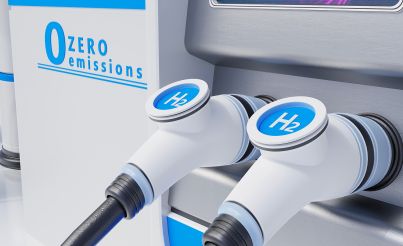Especially for the engine and the battery, the cold temperatures outside in winter are a huge challenge. Everyone who has ever had a car that wouldn't start knows this, but what can you do to keep your engine from reaching the limit in winter and avoid unnecessary visits to the workshop and costly repairs? In this post, you'll find it out!
"If the engine is cold, give it six and a half!", that's not the best idea and most people are aware of it by now. But why is that actually the case? After starting, a cold engine takes some time to reach its operating temperature. The engine oil is viscous when cold and therefore cannot yet lubricate the engine properly. If dry friction occurs due to high engine speeds, this can cause engine damage in the worst case scenario. But even if it doesn't go that far, such behavior naturally wear it out. Oil consumption can also increase in the long term and damage the catalytic converter or rust on the exhaust due to condensing gasoline, which are also avoidable consequences.
Warm up the engine
To avoid these problems, you should warm up the engine. This means that until the engine is at operating temperature, you should not exceed 3,000 revolutions. Depending on the route, this takes about 15 minutes, longer in city traffic than outside built-up areas. Waiting for the engine to warm up in winter is not ideal either. On one hand, you consume more fuel than usual, and on the other, the effect is only slight. An alternative - although not cheap - can be a parking heater, you. can operate it automatically or manually to heat up the engine and the inside of your car before you start driving and since most parking heaters use fuel to generate heat, you also save your battery.
Conserving the battery in winter
Not only the engine but also the battery is subjected to greater stress than usual in winter. In cold weather, the internal resistance of the battery increases, which means that less energy can be drawn from it. The many (additional) consumptions also put a strain on the battery. So what can you do to save your battery? Try to drive as few short distances as possible (ideally none at all), as this does not allow the battery to charge. If you can't help it, keep an eye on the voltage and regularly connect the battery to a charger for recharging. Heated exterior mirrors are a great feature but they consume a lot of energy. So only activate this function if you absolutely have to, you should also only use the heated seats as long as you necessarily have to. An alternative could be to use the more economical seat heating instead of the recirculating air, or at least to reduce the former by a few degrees at the same time. If you want to go one step further, you can cover your battery with a thermal cover in winter, this costs only a few francs and prevents the battery from cooling down. In spring, however, you should definitely remove it, otherwise the engine can overheat.
New car?
Now you're well informed about what you need to do in winter so that the cold doesn't harm the engine and the battery. And now you're looking for a new car? Then you're sure to find your dream car at Carvolution. Thanks to the all-inclusive bundle, everything about the car is included and you don't have to worry about anything except refuelling or charging. And thanks to the fixed monthly price, you always have an overview of the total cost of your car.
SALE
Various models at reduced prices: Get a non-binding offer now and save in the sale.










